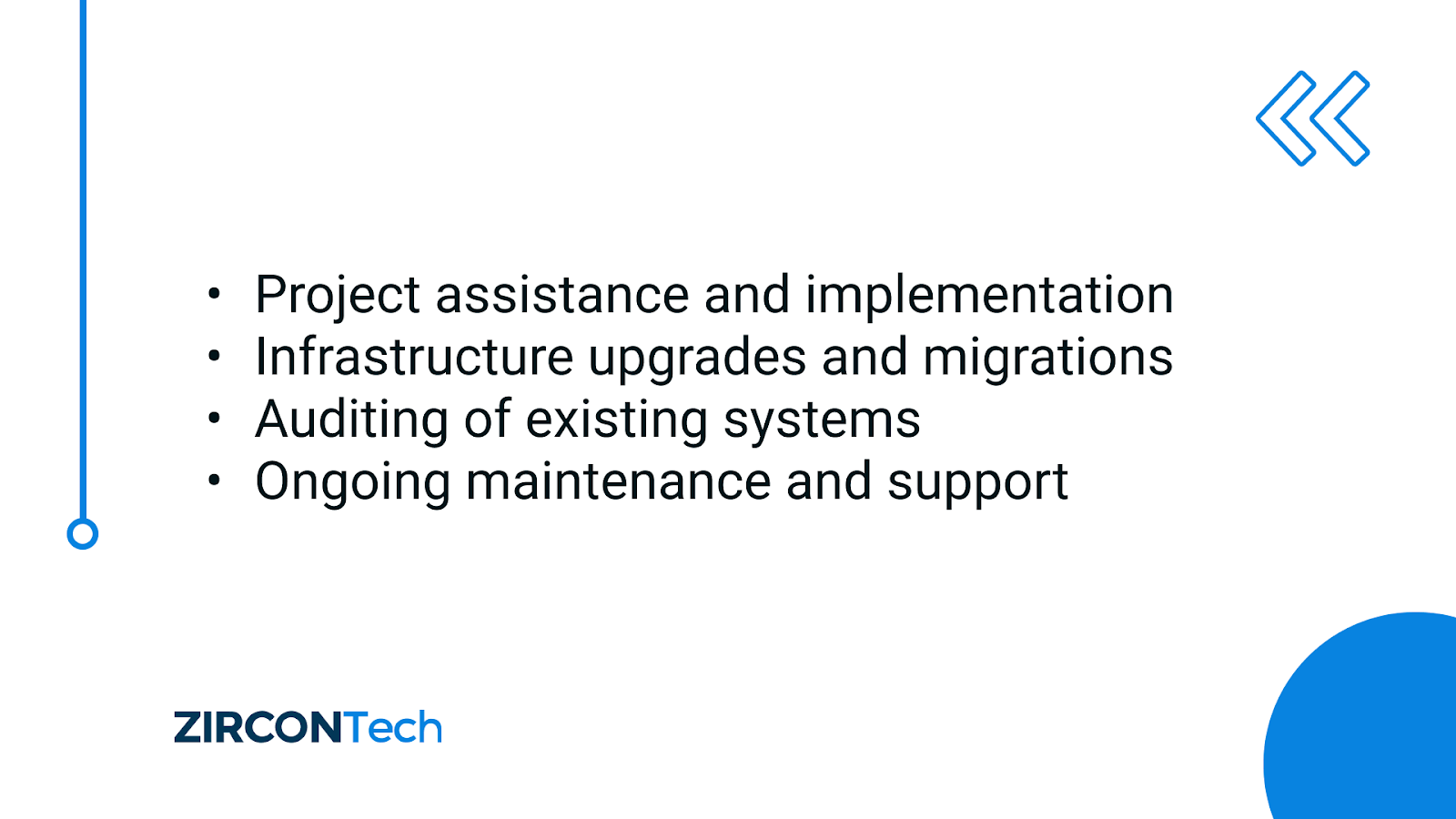IT Outsourcing Models: What Options Are Available to You?

IT Outsourcing Models and How to Choose Between Them
All successful businesses recognize the need to maintain steady forward progress. Standing still is not an option; and for the overwhelming majority of modern digitally aware organizations, the refinement of your products, services and internal functions will involve an element of software development.
Unless you are an extremely large organization with an in-house IT team, or a smaller company whose day-to-day focus is on software development, you are likely to need external assistance in the effective delivery of your project.
But what is the best way to achieve this? There are several IT outsourcing models to choose from. The nature of your business, its location, the precise shape of the digital transformation you are seeking to achieve, and the results you need it to deliver, will all govern your course of action.
As well as the delivery and implementation of particular projects, you may also discern the need for one or more IT outsourcing models to support your everyday business activity.
ZirconTech has more than 20 years’ experience in delivering successful outcomes to partners around the world. Our agile approach ensures that we work closely and seamlessly with a host of organizations, each of which requires a bespoke solution.
That experience has given us an extraordinary level of insight into IT outsourcing models. Let us guide you through the many different types of IT outsourcing models, and offer you our thoughts on the drawbacks and benefits of IT outsourcing models.
Armed with this knowledge, you will be ideally placed to make the right selection when it comes to choosing the right IT outsourcing strategy for your digital transformation project.
What is IT Outsourcing?
Any consideration of IT software development outsourcing models should begin with a definition of IT outsourcing. Essentially, this term describes any situation where you seek some form of third-party assistance with your digital technology.
By delegating responsibility to an expert partner, you will be able to deliver digital transformation projects, ensure the optimal ongoing functionality of your business systems, and plot a safe and steady path to business growth.
“IT outsourcing” is a broad term – as we shall see, there are several types of IT outsourcing models to choose from, depending on your requirements. However, it is likely that your needs will fall into one or more of the following brackets:

We’ll look shortly at the various software outsourcing models you can use, but let’s first consider some of the general benefits of IT outsourcing models – and some of the drawbacks.
Benefits of IT Outsourcing Models
- Outsourcing your IT and software development requirements enables you to maintain your focus on your core business activities.
- An outsourced team can deliver instant expertise on the area at hand, meaning you don’t have to invest time and money incorporating the relevant skills.
- Implementing upgraded technical capabilities saves time and money – and ensures you can stay competitive within your field
- Any issues that arise can be addressed much more quickly by an expert partner than a harassed internal team
- You should receive constant, high-grade and expert monitoring and support from outsourced IT experts

Drawbacks of IT Outsourcing Models
- Communication with an outsourced team may be less effective, particularly if they are based in a different time zone.
- Similarly, there could be language barriers and cultural differences that hinder the level of co-operation you receive.
- Allowing third parties access to your systems and sensitive data carries an inherent security risk, however small.
- However expert your provider is, there will be some lag as they adjust to your working practices.
- Unless you scope out your project to the last detail, you may be surprised by some hidden extra costs.
Now let’s look at the different types of IT outsourcing models that are available in today’s technological landscape, along with some of the pros and cons associated with each. Which one will suit your requirements best?
IT Outsourcing Models: Project-Based
This is the most traditional, and the most popular, of all the types of IT outsourcing models available to you. As you might expect from the name, this is ideal if you have a particular digital transformation project for which you require expert support.
In this instance, you hand over complete control of the project, as well as responsibility for its successful delivery, to a third-party company. Such an approach is also known as full-process outsourcing – the external team in question takes full responsibility for the management of the project, as well as the deliverables and risks.
Pros:
- You have minimal involvement and can focus on your day-to-day activity
- A Service Level Agreement will lay out clear timelines and deliverables
- The third party is responsible for taking on risks and solving problems
Cons:
- You have very little control over the development process
- It can take longer for such projects to get started
- Much depends on the quality of the Project Manager assigned to the task
IT Outsourcing Models: Dedicated Team
There are various contexts in which the Dedicated Team approach might be the best of all the software development outsourcing models available to you. In this scenario, you have an in-house IT team, but it needs the addition of extra manpower or skill sets to bring a particular project to a successful conclusion.
Your team works alongside a group brought into your business from a third party for this particular requirement. The new team that is thus created is dedicated solely to this project – the people in it are not part of your staff for the duration of the work it is dedicated to. It’s important to appoint a good project manager, either from the third-party firm or internally, to ensure excellent progress and communication throughout.
Pros:
- You should be able to progress quickly thanks to the combined expertise
- In-house involvement gives more visibility of deliverables and progress
- You can leverage the expertise of the third party’s representatives
Cons:
- It may take time to get started as working processes are put in place
- There is potential for issues around communication and collaboration
- Don’t use this for a short-term job, it’s better for a longer-term project
IT Outsourcing Models: Staff Augmentation
As the name suggests, this describes a situation when you bring in external experts and temporarily add their expertise and effort to an existing in-house team. This is ideal if you have a well-established IT department with experience of running various processes, but need a short-term fix to fill a particular skills gap.
Once you have selected your external partner, the representatives they supply are assimilated into your team and come temporarily under its management.
Pros:
- Immediate access to skills that are not present in house
- You have complete control over the project timelines and deliverables
- You can upscale your team quickly without needing to hire full-timers
Cons:
- You have control – but you have all the risk and responsibility too
- There is potential for issues around co-operation and communications
- There may be a higher turnover of members in your extended team
One of the above three IT outsourcing models should be ideal for you when you have a particular challenge, or set of issues, relating to digital transformation or the effective day-to-day functioning of your organization.
However, it’s also important to consider the location of the third-party organization that is going to supply the expertise you need. There are three software development outsourcing models in this context, and only you will know which is ideal for you.
Let’s look at Onshore, Nearshore and Offshore IT outsourcing models, and some of the pros and cons they each deliver.
IT Outsourcing Models: Onshore
In this instance, you outsource your software development requirements to a third-party supplier based in the same country as your main center of business – or the location where the expertise you require needs to be applied.
This means that, even in this age when it is possible to carry out many aspects of business remotely, you are located relatively close to your partner. That can be a particular benefit on time-sensitive or business-critical projects or software development upgrades.
Pros:
- You have more control over, and visibility of, the work being carried out
- There should be a faster turnaround time with less distance involved
- Your digital data is likely to be more secure with no borders to be crossed
Cons:
- This tends to be the most expensive of all three options
- Your choice of partner is limited by geography
- The range of expertise available to help may not be extensive
IT Outsourcing Models: Nearshore
If you opt for nearshore outsourcing, you access the expertise of a third-party provider based outside your own country – but still relatively close. They may be just across a border, and will most likely be in the same time zone as you.
ZirconTech, for instance, has extensive experience of offering nearshore outsourcing assistance to many clients in the United States.
Pros:
· Even though your provider is outside your borders, they are still close by
· It is likely you will have a shared culture, and ideally a shared language
· It can be a more cost-effective option than engaging an onshore provider
Cons:
· There is a heightened risk of cultural and linguistic differences
· The distances involved may be considerable, even to nearby territories
· You may find there are limited resources in terms of expertise required
IT Outsourcing Models: Offshore
When you decide to go offshore, you engage a company that is located in a country some distance away from your center of operation. It is likely that much of the work that your third-party provider performs will be carried out remotely. This may be suitable for a short-term project – but it may bring challenges if you are looking for ongoing assistance.
Pros:
· The main benefit is that labor costs are likely to be much lower offshore
· Many offshore providers can deliver higher levels of efficiency
· You may also find higher standards of work, and plenty of skilled workers
Cons:
· Longer distances could lead to communication and cultural problems
· You may feel you have less control over processes performed so far away
· Your sensitive data is more at risk if your provider is very distant
How to Choose Between IT Outsourcing Models
Ultimately, your selection of the best solution from all the types of IT outsourcing models available will depend on the specific circumstances in which your organization finds itself, and the particular requirements you need to meet to carry your business forward as you desire.
The project-based model may work best for you if you are a start-up, or have limited resources. You may opt for a dedicated team if you need expertise in a particular area. Staff augmentation could be right for you if you have a good in-house IT team already but need to bolster it quickly.
Whatever situation you find yourself in, make sure you take the following steps to ensure you come to the right decision:
· Gain a clear, detailed picture of your current capabilities and what, precisely, you need to do to take your company to the next strategic stage.
· Consider all the options available to you extremely carefully.
· Take into account how much money you are willing to spend – certain IT outsourcing models can be much more cost-effective than others.
· Carry out extensive research on the candidates you identify. Ask your industry contacts about the provider in question, check out their online ratings, and insist on references being provided.
Only by dedicating some time and effort to the selection process will you identify the provider who will deliver your digital transformation – or assume responsibility for your ongoing functionality – with minimal disruption to your budget, or your day-to-day business activity.
Outsourcing Rates
In addition to what was mentioned in this article, it is quite important to keep in mind that outsourcing rates depend on location, position, quality of work and availability. Please take a look at the table below in order to understand how prices crafted.

Why ZirconTech is Your Ideal Outsourcing Partner
Over more than two decades, ZirconTech has provided extensive outsourcing assistance to a host of organizations across the United States and other countries.
Our location in Montevideo means we have the right cultural fit for companies in the USA seeking a nearshoring partner to deliver top-class software development solutions. Talk to us today to find out how we can help you.